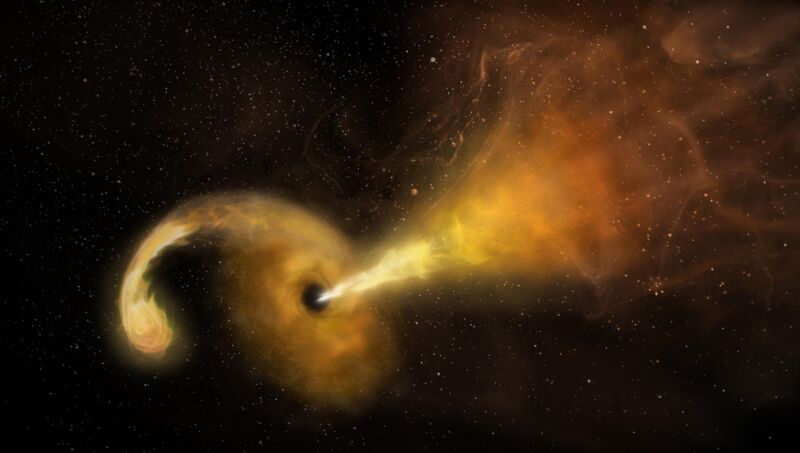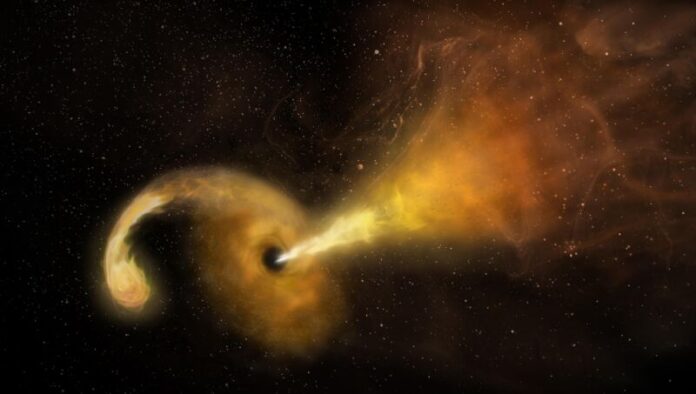
Enlarge (credit: NRAO/AUI/NSF/NASA)
Virtually anything in space could be a potential meal for a supermassive black hole, and that includes entire stars. Even stars much bigger than our Sun can fall victim to the black hole’s extreme gravity and be pulled in toward its gaping maw. It is a terrifying phenomenon, but how often does it really happen?
Tidal disruption events (TDEs)—when the tidal forces of a black hole overwhelm a star’s gravity and tear it apart—are thought to occur once every 10,000 to 100,000 years in any given galaxy. TDEs can be detected by the immense amounts of energy they give off. While observations of them are still pretty rare, an international team of researchers has now discovered a whopping 18 of them that previous searches had missed. Why?
Many TDEs can be found in dusty galaxies. Dust obscures many wavelengths of radiation, from optical to X-rays, but long infrared wavelengths are much less susceptible to scattering and absorption. When the team checked galaxies in the infrared, they found 18 TDEs that had eluded astronomers before.
Read 11 remaining paragraphs | Comments
Ars Technica - All contentContinue reading/original-link]




